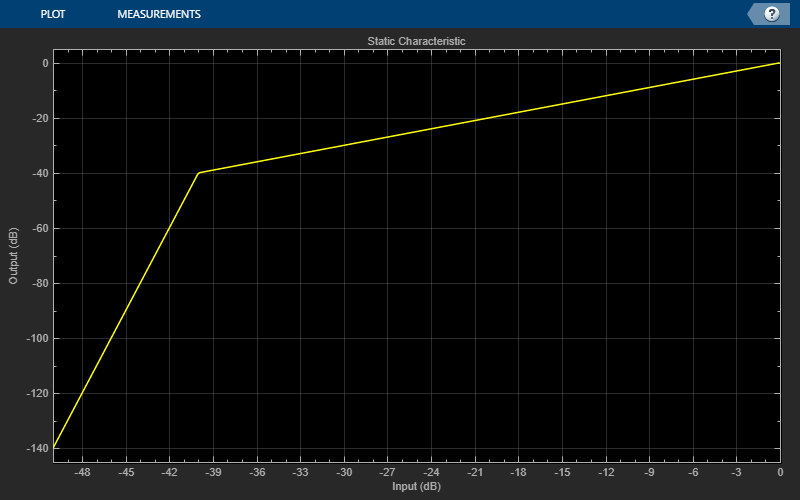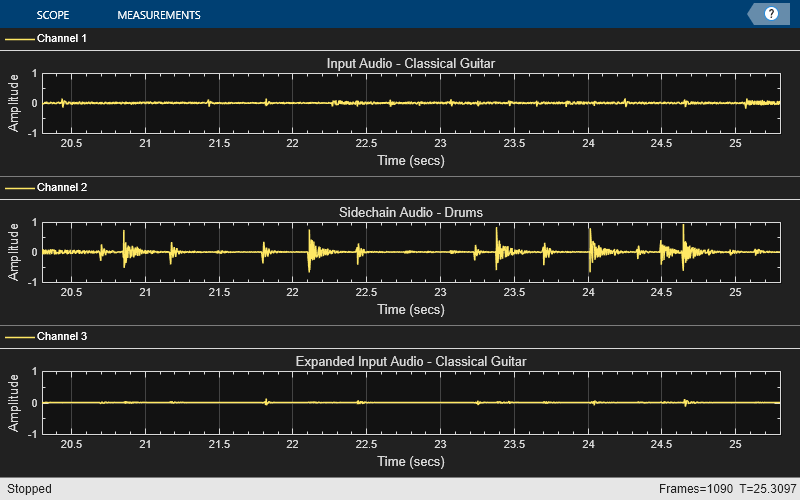expander
Dynamic range expander
Description
The expander
System object™ performs dynamic range expansion independently across each input channel.
Dynamic range expansion attenuates the volume of quiet sounds below a given threshold. It uses
specified attack, release, and hold times to achieve a smooth applied gain curve. Properties
of the expander
System object specify the type of dynamic range expansion.

To perform dynamic range expansion:
Create the
expanderobject and set its properties.Call the object with arguments, as if it were a function.
To learn more about how System objects work, see What Are System Objects?
Creation
Syntax
Description
dRE = expander creates a System object, dRE, that performs dynamic range expansion independently
across each input channel.
dRE = expander( sets the
Threshold
property to thresholdValue)thresholdValue.
dRE = expander(
sets the Ratio property
to thresholdValue,ratioValue)ratioValue.
dRE = expander(___,
sets each property Name,Value)Name to the specified Value.
Unspecified properties have default values.
Example: dRE = expander('AttackTime',0.01,'SampleRate',16000)
creates a System object, dRE, with a 0.01 second attack time and a 16 kHz sample
rate.
Properties
Usage
Description
Input Arguments
Output Arguments
Object Functions
To use an object function, specify the
System object as the first input argument. For
example, to release system resources of a System object named obj, use
this syntax:
release(obj)
The createAudioPluginClass and configureMIDI
functions map tunable properties of the expander
System object to user-facing parameters:
| Property | Range | Mapping | Unit |
|---|---|---|---|
Threshold | [–140, 0] | linear | dB |
Ratio | [1, 50] | linear | none |
KneeWidth | [0, 20] | linear | dB |
AttackTime | [0, 4] | linear | seconds |
ReleaseTime | [0, 4] | linear | seconds |
HoldTime | [0, 4] | linear | seconds |
Examples
Algorithms
References
[1] Giannoulis, Dimitrios, Michael Massberg, and Joshua D. Reiss. "Digital Dynamic Range Compressor Design –– A Tutorial and Analysis." Journal of Audio Engineering Society. Vol. 60, Issue 6, 2012, pp. 399–408.
Extended Capabilities
Version History
Introduced in R2016a







![Figure Audio Parameter Tuner: expander [dRE] contains an object of type uigridlayout.](../../examples/audio/win64/SidechainDuckingWithExpanderExample_02.png)

